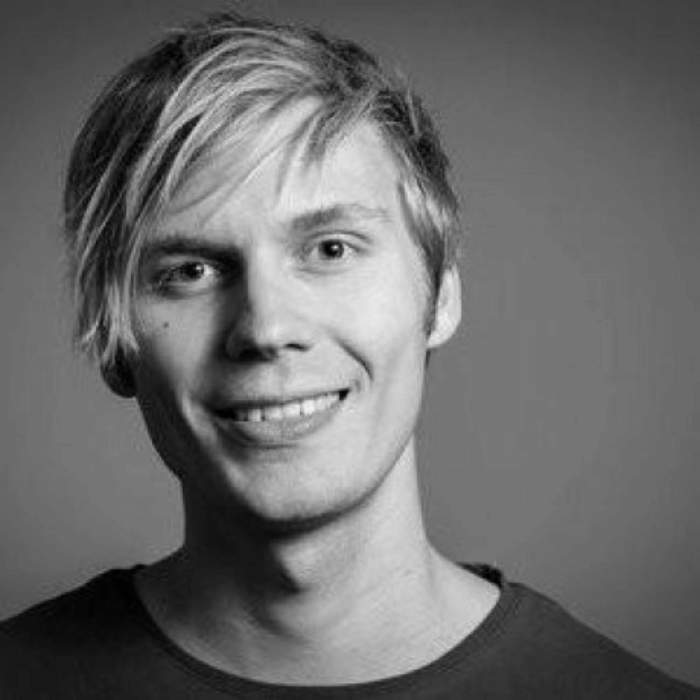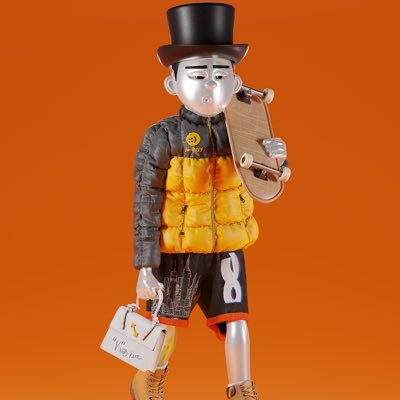Meet Thomas Lin Pedersen
Thomas Lin Pedersen is a generative artist based in Denmark. His computer-based art explores the tension between perfection and flaws. Thomas started creating generative art in 2017 and has since 2020 been part of the growing NFT space. To date, Thomas has created two generative art collections featured in 'Art Blocks Curated Series 6' and 'Art Blocks Factory'.
Could you tell us about your story and how you got introduced to the NFT space?
I started making generative art in 2017. At that time I had just become a father and my prior creative hobby of photography was suffering under it as I couldn’t just exit the houses when the light was perfect. Thus, I was in search for a new creative venue that was couch-friendly and for once the Twitter algo was useful in that it presented some work of Anders Hoffs (Inconvergent) to me.
This was my first encounter with generative art but it immediately resonated with me. I was (and still am) working on open source tools for data visualization and to me it felt like unconstrained data visualization with made-up data: complete creative freedom.
I quickly began experimenting with using the tools I developed for data visualization for generative art and started sharing the results on Twitter. 4 years passed with my practice improving and my following and connections within the generative art world increasing.
I was selling prints at this time and the idea that I could earn a small amount on my hobby was amazing as it could fund the purchase of better printing equipment etc. I had begun picking up wind of NFTs during the autumn of 2020, especially from Dmitri, but over the winter of 2020/2021 it became a hotly discussed topic among my artist friends and I began looking into it in earnest.
What inspired you to start creating NFTs?
What got the ball rolling was the launch of Hic et Nunc. I was still not completely sold on the idea of NFTs when it launched, but the ease of entrance into Tezos, the experimental spirit of Hic et Nunc, and the endorsement of the platform from fellow artists convinced me to try it out.
I had a bunch of completed work from an art sprint in January that I could use for experimenting so I jumped on to the platform as it was getting up and running and was completely taken away by the community along with being bitten by the collecting bug (I had prior been collecting plenty of generative art prints so this was a nice continuation of it).
My own experience with collecting NFTs solidified my belief that this was a proper venue for selling my art and my focus soon changed to NFTs as the primary vehicle for getting my art out in the world.
What was the first NFT you created?
My first NFT was minted on Hic et Nunc on March 5, 2021 as OBJKT 716. It was my first flow field piece, a technique that Fidenza later would make very famous. This piece was the genesis of much of my work in the spring of 2021 where I experimented heavily with various types of flow fields.
Which tools do you use to create?
As I began to shift my focus from Hic et Nunc to Art Blocks my tooling also changed. Up until that point all my work had been made directly in the programming language R, a language primarily used for data science and statistics.
However, the requirements of Art Blocks for the art to be rendered in the browser meant a shift to JavaScript. I was not completely foreign to that language but it had been a while since I’ve used it and it had never been for art so it took a bit getting used to.
During the course of developing my Screens series I also began learning WebGL to power some of the more heavy computations in my systems. Apart from programming languages, my printer is integral to my practice.

I also have a pen plotter which is a robot arm that can hold a pen and be controlled programmatically. It allows for a sublime balance between the algorithmically precise and the analogue imprecisions and is a great way to bridge the divide between digital and real world.
I have also recently purchased a 3D printer/laser engrave/CNC mill that I’m eager to set up and start playing with.
What are your biggest influences or sources of inspiration?
The generative art world has exploded over the last few years and there is inspiration to be had everywhere. However, I try to avoid the temptation of getting inspired by my peers, despite the beautiful projects that they make.
My own feelings about my practice has also changed from being content with creating objects of beauty to having more focus on the message and intent underlying the piece. Because of this shift in focus I am less inclined to be directly inspired by the aesthetics of other artists as the message always comes first anyway.
All that being said I pick up visual cues all the time and they will rummage in the back of my head, sometimes forming half baked ideas for projects.
Still, there is so long time between the initial spark to me sitting down and working out a piece or series that the spark is no longer recognizable to me so it is hard to trace back where things start.
What has been the most rewarding part of being involved in the NFT space?
While the income is obviously very rewarding, I would say from an artist perspective that the communities that has formed around generative art, and the contact established with collectors have been the absolute best part of it all.
Second, the success in Web3 has also allowed my to put my art out in the world in ways I couldn’t have imagined 2 years ago, from exhibiting in Venice during the Biennale, to having a short solo show in London with Bright Moments.

Web3 has broken down barriers for me and allowed me to enter the broader art world in earnest and I’m absolutely grateful for that.
What advice would you give to someone starting out as a creator within the NFT space?
Take it easy. You will hear stories of instant successes and comparing yourself to these stories will only deteriorate your self-worth. Remember why you create, remember what motivates you, and stay true to yourself.
Web3 is very much driven by communities so keep that in mind - success is never only about the quality of your work but is also about all the things you do surrounding your work as well as a huge portion of luck.
How do you cultivate a relationship with collectors?
I try to be humble and grateful to any collector I may have. I’ve been blessed with some strong support from my onset and I’m mindful of always recognizing their part in my success.
I think that kind of honesty makes me pretty approachable to collectors so over the years I’ve developed strong bonds to some of them. My feeling is that collectors in the space really values creators that takes part in the discourse, that are eager to share their thoughts, and are present for questions about their art - I try my best to do all of these things.
What do you think are the biggest opportunities within the NFT space in the coming 5 years? Culturally, artistically and financially?
The slow but certain embrace of the NFT space by the traditional art world will be huge, but probably only for a select group of artists. However, it will invariably validate the idea of NFTs as a vehicle for art and begin to erode the ridicule and mocking that is happening outside our space.
This is not something that will happen overnight of course, and there will always be holdouts, but that is on par with how art has always worked.
I don’t know if there are any obvious financial opportunities left (😄) but that also works to advance the quality of the art being put out I think: You have to have something to say to really break through (or be incredibly lucky, there is always that option).
As a creator, is there something that you feel is missing in the current NFT space?
I would love for some more discourse around the art. For better and worse the talk is always leaning into the financial side of the art, and given that the main medium is Twitter it easily becomes superficial scratching’s on the surface.
Artists are also partly responsible for this of course, but I think the space has suffered from the lack of art critiques with a firm grounding in the history of modern art to provide contextualization and commentary on the various artists, collections, and pieces that rise to fame.
What’s the best piece of advice you have been given?
I’m not one to hold on to small nuggets of wisdom from outside. I think the best advice when it comes to my NFT journey was given to me by myself after my success with Rapture and Screens.

I reminded myself that there was nothing to chase now, I had already had success beyond my wildest expectations, so it was ok to slow down, reassess my practice and reflect on what I wanted to do with my art rather than chase my 15mins of web3 fame, trying to keep up with the insane pace of the space.
I think this has both kept me sane and grounded and ensured that I have only said yes to opportunities that were in line with my goals and values.
You can find Thomas and his works via the following links:
- Website: data-imaginist.com/
- Foundation: foundation.app/@thomasp85
- Objkt: objkt.com/profile/thomasp85/created
- Art Blocks: artblocks.io/user/thomasp85
- Twitter: twitter.com/thomasp85
- Instagram: instagram.com/thomasp85_/





